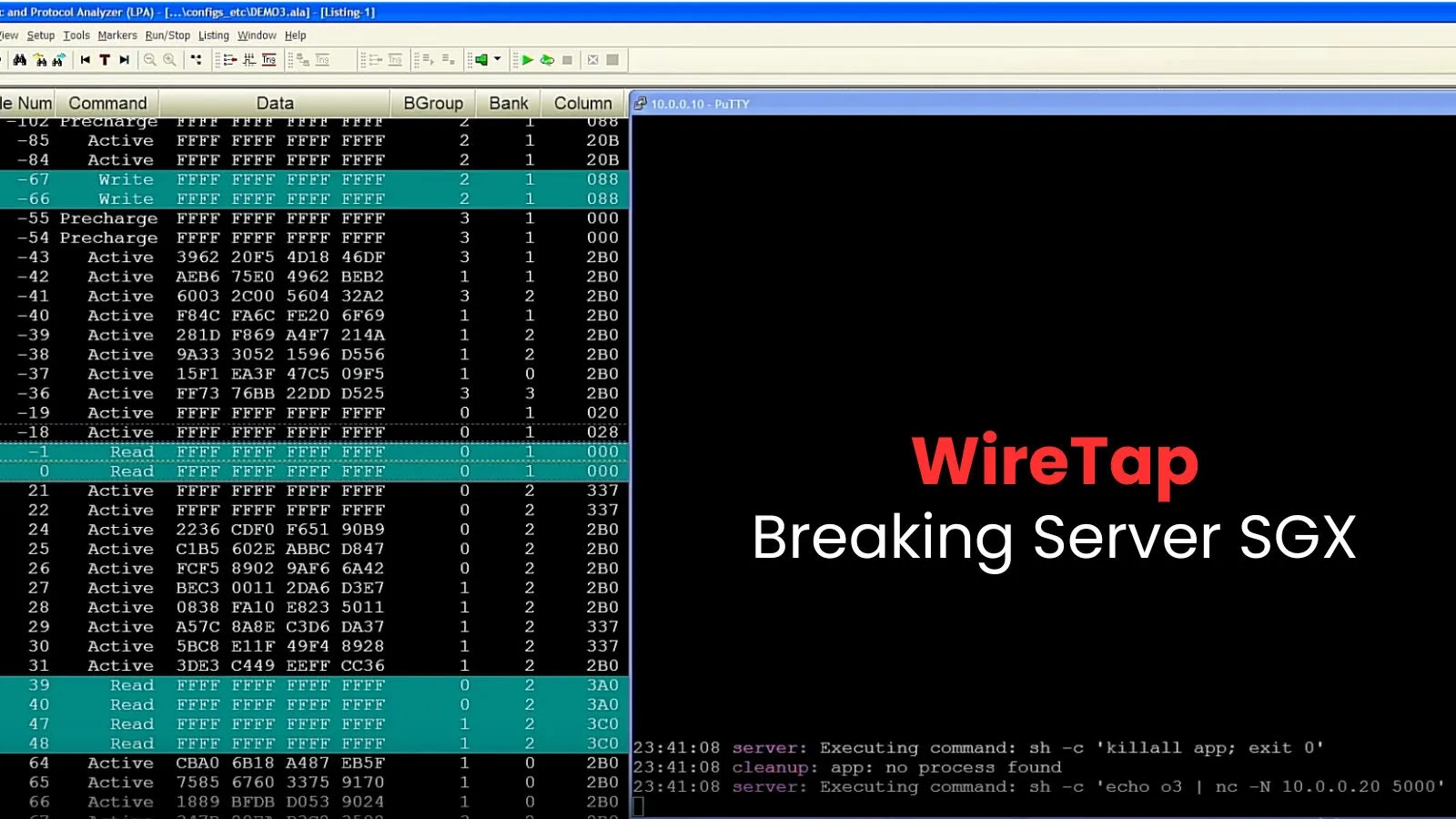A recently unveiled vulnerability, termed the WireTap attack, enables individuals with physical access to breach the security of Intel’s Software Guard Extensions (SGX) on contemporary server processors, leading to the exfiltration of sensitive information. Detailed in a research paper released in October 2025, this method demonstrates the extraction of cryptographic keys from ostensibly secure SGX enclaves using an economical setup, thereby challenging the foundational trust placed in these hardware-based security environments.
SGX is a technology designed to protect sensitive data and computations, even from privileged software. The WireTap attack undermines the confidentiality and integrity guarantees of SGX, revealing that physical attacks, once believed to necessitate expensive and specialized equipment, can now be executed by hobbyists on a budget of less than $1,000.
Understanding the WireTap Attack
At the heart of the WireTap attack is a custom-built memory interposition probe that physically taps into the DRAM bus, allowing the attacker to observe data transfers between the CPU and the system’s memory. The researchers constructed this tool using readily available components from second-hand electronic marketplaces, including a simple DIMM riser board, tweezers, and a soldering iron.
A pivotal innovation involved slowing down the system’s high-speed DDR4 memory bus. By modifying the DIMM’s metadata, the researchers forced the system to operate at a much lower frequency. This adjustment made it feasible to capture data traffic using outdated and inexpensive logic analyzers not originally designed for modern hardware. This approach challenges the long-held assumption that physical memory attacks on server-grade systems were beyond the reach of all but the most well-funded adversaries.
The attack specifically targets Scalable SGX, the version used in Intel’s Xeon server processors, which relies on a deterministic memory encryption scheme called AES-XTS. Unlike older SGX implementations, this scheme produces the same ciphertext whenever the same data is written to the same physical memory address.
The WireTap setup enables attackers to observe these encrypted memory transactions in real-time. By carefully controlling an SGX enclave and compelling it to perform cryptographic operations, the researchers mounted a ciphertext side-channel attack. They monitored the encrypted memory traffic during the generation of an ECDSA signature, a process used for SGX attestation. This observation allowed them to build a dictionary of ciphertexts and recover the secret nonce used in the signing operation.
With the nonce and the public signature, they successfully extracted the machine’s private DCAP attestation key from a fully trusted server in under 45 minutes.
Implications for Blockchain and Web3 Ecosystems
The ramifications of extracting an SGX attestation key are particularly severe for the blockchain and Web3 ecosystems that rely on SGX for security. Many decentralized networks, with market caps totaling hundreds of millions of dollars, use SGX to ensure confidential transactions and the integrity of computation.
The researchers demonstrated end-to-end attacks on several real-world SGX deployments. For privacy-preserving smart contract networks like Phala and Secret, a compromised key would allow an attacker to forge quotes, run malicious enclaves, and extract master keys, enabling network-wide decryption of confidential transactions.
On decentralized storage networks like Crust, an attacker could fake proofs of storage, allowing them to claim financial rewards without actually storing any data, thereby breaking the system’s integrity guarantees. The researchers have disclosed their findings to Intel and the affected blockchain projects.
Broader Security Implications
The WireTap attack underscores the evolving nature of physical attacks on hardware security mechanisms. It highlights the need for continuous evaluation and enhancement of security measures to protect sensitive data, especially in environments where physical access by adversaries is a plausible threat.
Organizations utilizing SGX for securing sensitive computations should assess their risk exposure and consider implementing additional layers of security to mitigate potential physical attacks. This may include physical security controls to prevent unauthorized access to hardware, as well as software-based mitigations to detect and respond to anomalous activities indicative of such attacks.
As the landscape of cyber threats continues to evolve, staying informed about emerging vulnerabilities and adopting a proactive approach to security will be crucial in safeguarding sensitive information against sophisticated attacks like WireTap.



